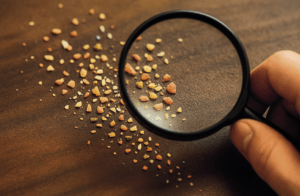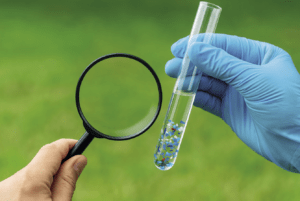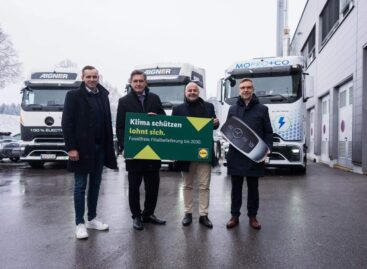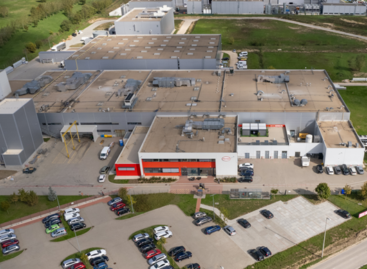Invisible risk in the chain: microplastics in the food industry
Nano- and microplastics are present in water, packaging and even in our bodies. Microplastics are plastic particles smaller than 5mm (approx. 0.1–5000µm); nanoplastics that are even smaller can pass through cell walls.
This article is available for reading in Trade magazin 2025/10.
Depending on their origin, we refer to primary particles (intentionally small particles: e.g. cosmetic microspheres, industrial granules) and secondary particles (fragmentation of larger objects, shedding of synthetic textile fibres during washing).
Hungarian exposure: waters, systems, numbers
According to Laura Jurecska (ELTE TTK Department of Microbiology), approximately 77% of domestic microplastics emissions originate from households. A 2019 Hungarian study measured 1,794 microplastics/litre in the water flowing into the sewage treatment plant (approximately 90% fibres), and after treatment 221/litre remained in the effluent—representing nearly 88% removal level. The Cassandra Programme’s summary “Microplastics in Hungary” detected ~50 particles/m³ in the Danube; the river is likely to carry 530-1,500 tonnes of microplastics a year, and based on spot sample comparisons the Budapest section increases the concentration by ~20%. In the Upper Tisza millions of drifting particles can be estimated per hour.

An average European consumer ingests tens of thousands of microplastic particles each year — risks can be started to be mitigated at the entry points of the packaging and food processing
The business stakes are high
The phenomenon becomes a business risk where any entry point comes into contact with the product: in addition to the external environment (surface water, soil, air/cloud water), the presence of these substances has also been confirmed in raw materials – they have been detected in salt, honey, beer, fish and other aquatic organisms, and even in the blood, milk and the meat of farm animals. Packaging is a particularly critical contact surface: in Europe, the packaging industry is the biggest consumer of plastics, accounting for ~40% of total use. In the water and utility networks, PE (KPE pipes) and PTFE (sealing cord) have been identified in Hungarian waterworks samples. The magnitude of consumer exposure differs significantly: those who mainly consume bottled drinks ingest approximately 90,000 microplastic particles per year, while those who drink only tap water ingest approximately 4,000.

An average of 240,000 microplastic particles have been detected in one liter of bottled water, 90% of which are nanosized — reducing exposure calls for precautionary measures
Source reduction – tangible steps
The first line of defence is the consistent monitoring of supplier compliance and migration limits for plastics that come into contact with food. The Cassandra Programme’s general message is to cut plastic use and reduce exposure through conscious material selection. In the absence of uniform standards several different procedures are still in use today, so targeted sampling at critical points is recommended at the corporate level. Corporate communication should be factual: it should show where the risk may occur (water system, packaging, dust/air, textiles) and what measures are in place (material selection, procedures, measurement); scientific uncertainties should be openly communicated.
Related news
Too many gifts, too much food: our holiday excesses are putting a serious strain on the environment
🎧 Hallgasd a cikket: Lejátszás Szünet Folytatás Leállítás Nyelv: Auto…
Read more >Lidl Austria Expands Electric Supply Fleet
🎧 Hallgasd a cikket: Lejátszás Szünet Folytatás Leállítás Nyelv: Auto…
Read more >Henkel: 3,000 accident-free days
🎧 Hallgasd a cikket: Lejátszás Szünet Folytatás Leállítás Nyelv: Auto…
Read more >Related news
Experience, timing, awareness: a new travel logic is emerging towards 2026
🎧 Hallgasd a cikket: Lejátszás Szünet Folytatás Leállítás Nyelv: Auto…
Read more >The Temu model is at a turning point: extra-cheap online imports may become more expensive from 2026
🎧 Hallgasd a cikket: Lejátszás Szünet Folytatás Leállítás Nyelv: Auto…
Read more >Even though the price of cocoa has halved, chocolate will not become cheaper
🎧 Hallgasd a cikket: Lejátszás Szünet Folytatás Leállítás Nyelv: Auto…
Read more >






